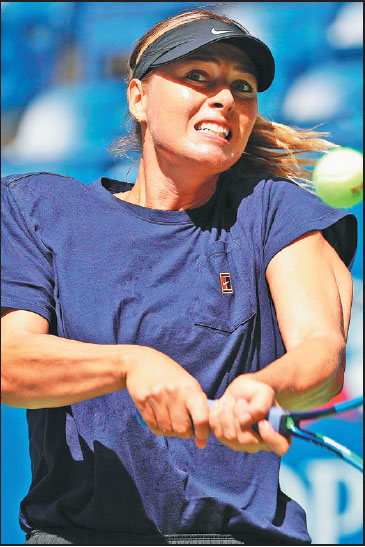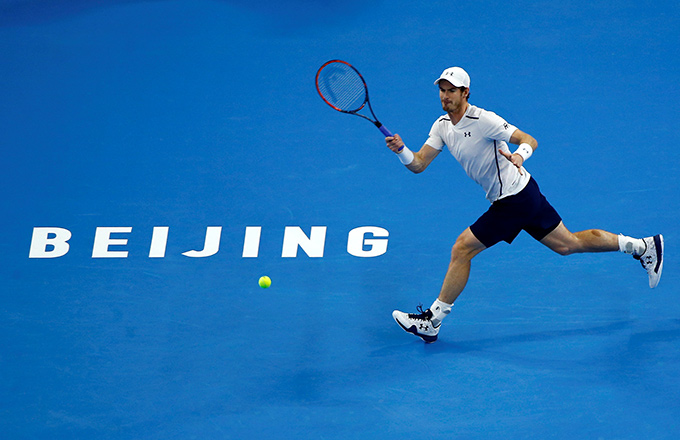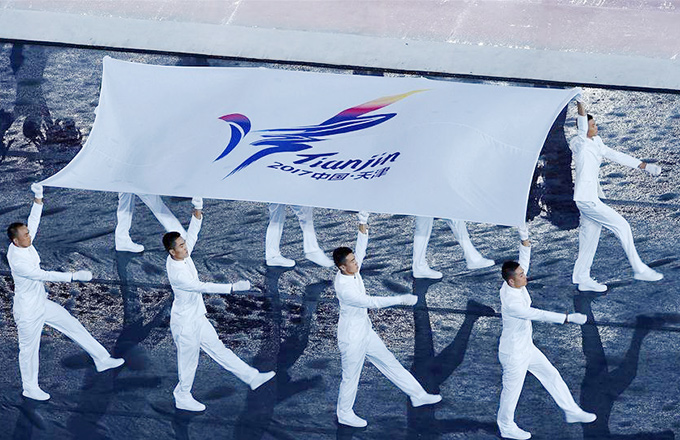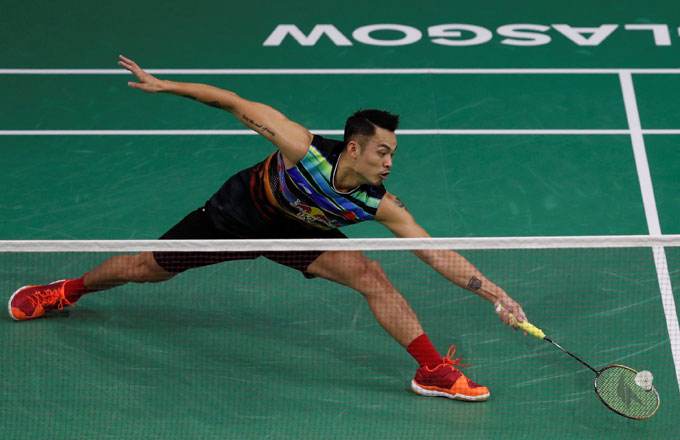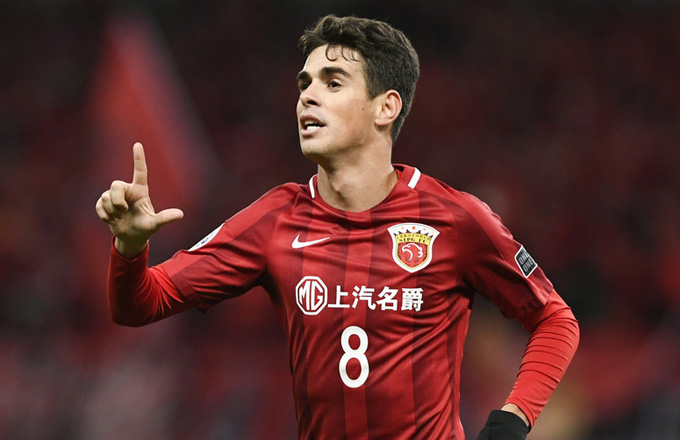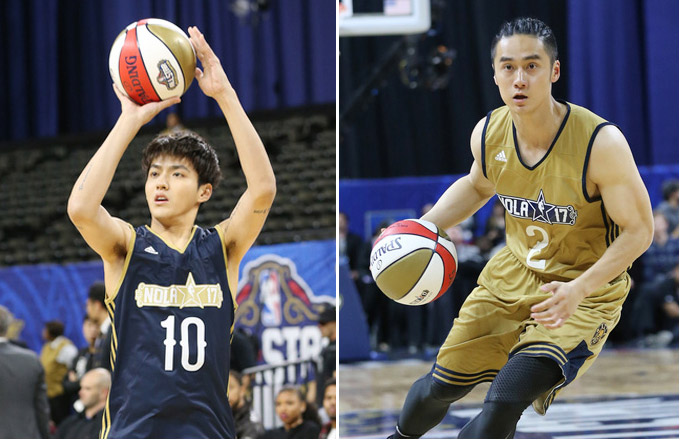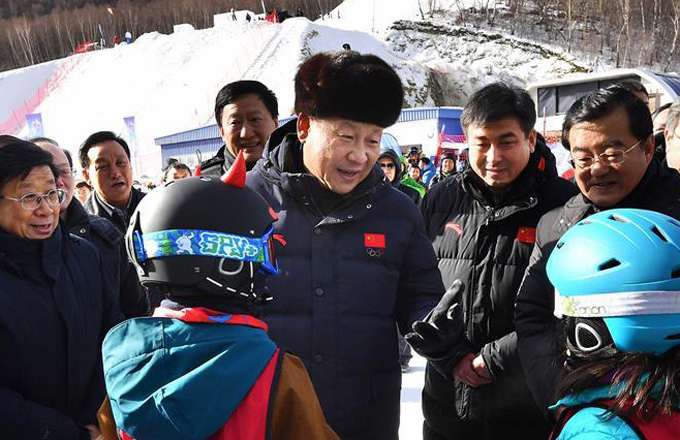Tough scheduling takes toll on top players
|
Maria Sharapova practices at the USTA Billie Jean King National Tennis Center in New York on Sunday ahead of this week's US Open at Flushing Meadows. Abbie Parr / Getty Images / Afp |
NEW YORK - Novak Djokovic and Stan Wawrinka have reputations for being supreme athletes, but a grueling season that offers little time to recover has left them among a number of big-name tennis stars who will be missing from the US Open with injuries.
Despite medical advances and a greater understanding by the players of how their bodies work, there is little down time for anyone who wants to be a regular competitor during the ATP and WTA seasons, which last approximately 11 and 10 months, respectively.
"Most of the injuries in tennis are what are classified as overuse," Todd Ellenbecker, the ATP's vice-president of medical services, said in an email interview.
"Not one particular force or trauma, but a continued, repeated overload of smaller forces that lead to a breakdown of the player's body."
Five top 11 men's players are among those who have said they will miss the year's final Grand Slam this week at Flushing Meadows: former world No 1 Djokovic (elbow), Andy Murray (hip), 2016 champion Wawrinka (knee), Canada's Milos Raonic (wrist) and Japan's Kei Nishikori (wrist).
The women's draw has not been robbed of the same level of star power, with the most high-profile withdrawal due to injury being 2011 US Open champion Samantha Stosur (hand).
With a non-stop stream of tournaments on hardcourts, grass and clay, coupled with racket technology that allows players to hit the ball harder than ever before, the physical toll on bodies can mount up.
"Tennis is indeed unique in that it is one of the only high-level sports played on multiple surfaces at the elite level," said Ellenbecker.
"We know that different ball speeds, and trajectories/court-surface interfaces affect the player's body, but definitive injury-risk research is scant."
Ellenbecker said after matches, a player's focus shifts immediately from performance to recovery, which means replacing fluid and vital nutrients and for some, ice baths, compression garments and other recovery methods that work for them.
Former world No 1 Roger Federer, who had been blessed with a body that seemed bulletproof against the aches, pains and injuries suffered by most top athletes, is in the midst of one of the greatest comebacks from injury.
After missing the second half of last season with a knee problem, Federer has won five titles this year, including the Australian Open and Wimbledon trophies.
The Swiss is also aware that at age 36 he not only needs to be judicious with his schedule but cautious about how far he should push his body.
Hence opting to skip the claycourt season, including the French Open despite being fully fit, paid off for Federer as just weeks later he became the first man to win eight Wimbledon titles.
Bill Norris, the ATP's former director of medical services who spent 35 years patching up the broken and sore bodies of players from Ken Rosewall to Federer, said players have little choice but to pace themselves by taking regular breaks if they want to stay competitive late in their careers.
"Federer has changed a lot of coaches but he's always kept a great team around him," said Norris.
"By age 30-35 you know what your body is capable of, what the competition is capable of.
"If you schedule yourself right and pace yourself you will have some reserve."
The run enjoyed by Federer and 37-year-old American Venus Williams, a finalist at both the Australian Open and Wimbledon this year, has prompted many to ask whether a 40-year-old could soon walk off with one of the four Grand Slam titles.
"From a truly anatomical standpoint, the work the players are doing now to maintain elite levels of human performance well into their 30s it is indeed possible and perceivable that we might see champions at this level among players in their 40s," said Ellenbecker.
"The amount of off-court work, human recovery efforts, and elite tennis skill development we are seeing now on the ATP World Tour, where 43 of the top 100 players are age 30 or more, tells us that this indeed could be possible."
Reuters






